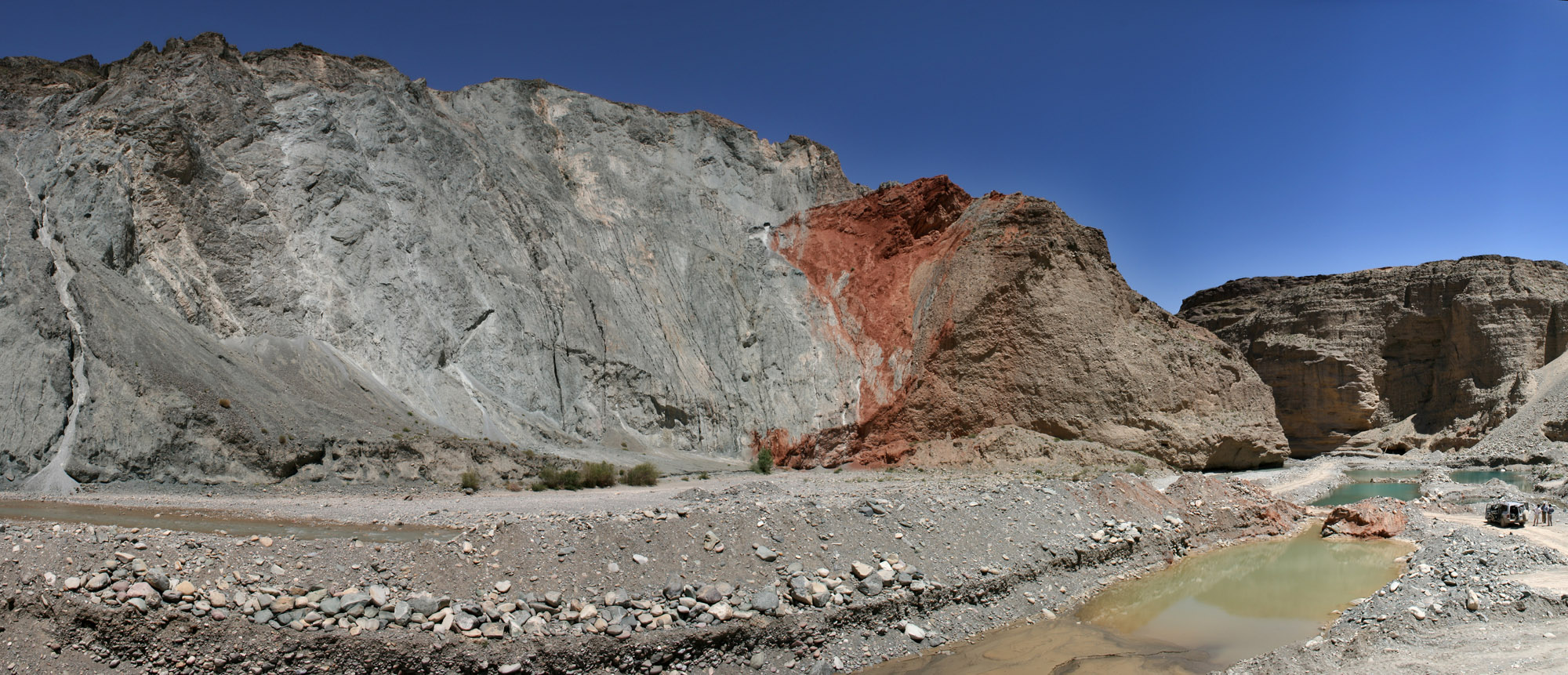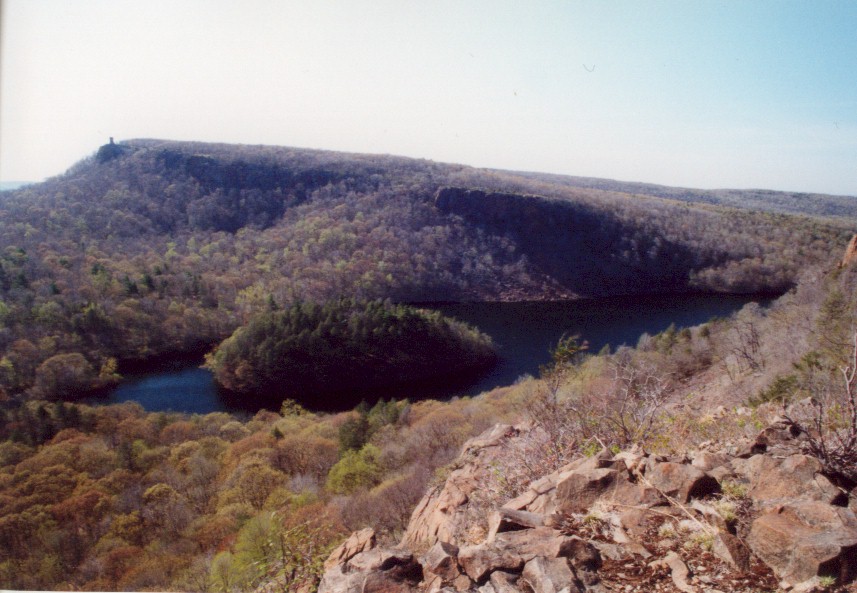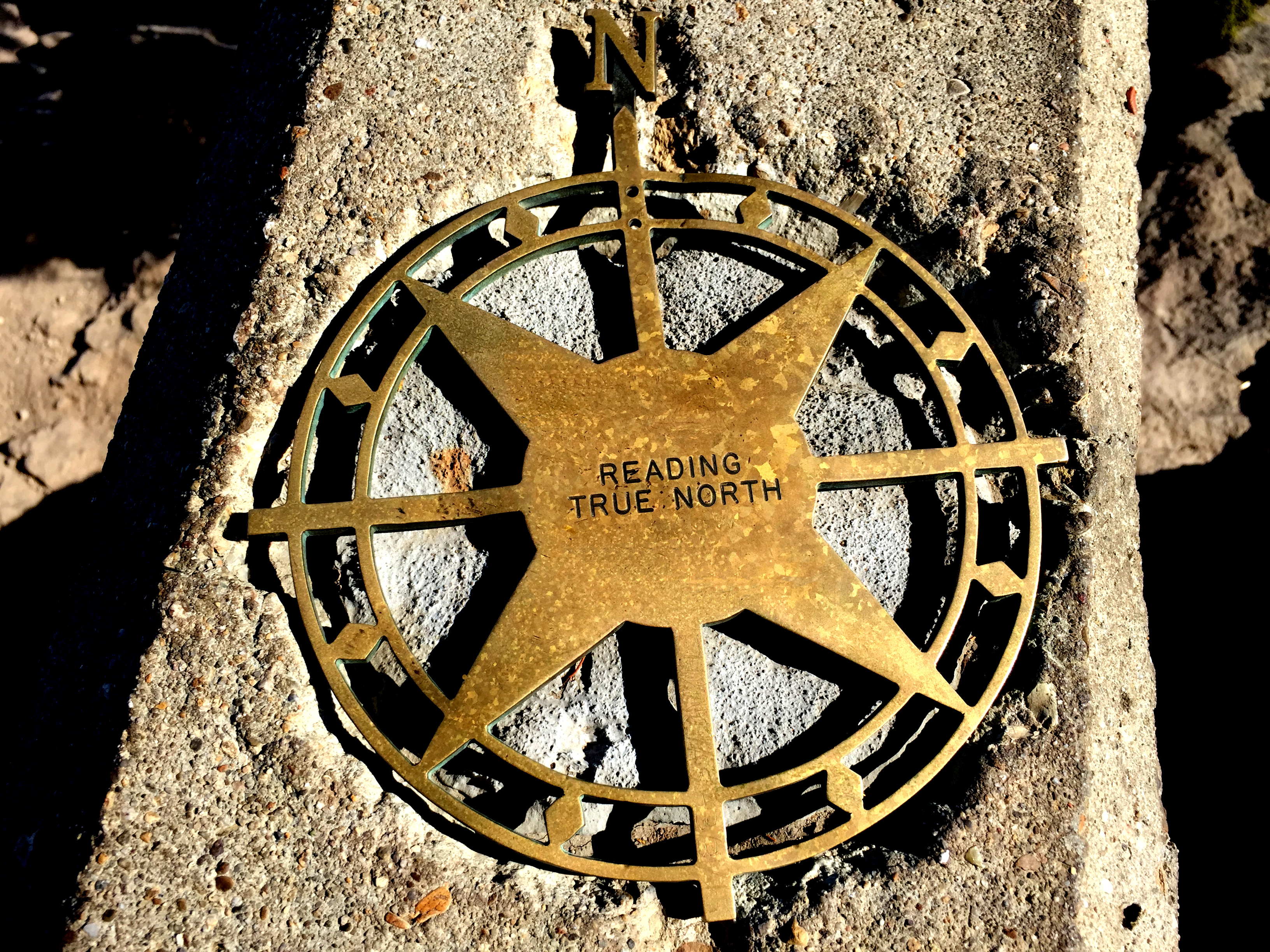|
Verdugo Mountains
The Verdugo Mountains, also known as the Verdugo Hills or simply The Verdugos, are a small, rugged mountain range of the Transverse Ranges system in Los Angeles County, California. Located just south of the western San Gabriel Mountains, the Verdugo Mountains region incorporates the cities of Glendale, Pasadena, and La Cañada Flintridge; the unincorporated communities of Altadena and La Crescenta-Montrose; as well as the City of Los Angeles neighborhood of Sunland-Tujunga. Surrounded entirely by urban development, the Verdugo Mountains represent an isolated wildlife island and are in large part under public ownership in the form of undeveloped parkland. The mountains are used primarily for recreation in the form of hiking and mountain biking, and as the site of communications installations on the highest peaks. The mountains arise directly from the eastern floor of the San Fernando Valley, exaggerating their height from some vantages. Beginning with foothills, they rapid ... [...More Info...] [...Related Items...] OR: [Wikipedia] [Google] [Baidu] |
Los Angeles County, California
Los Angeles County, officially the County of Los Angeles, and sometimes abbreviated as L.A. County, is the most populous county in the United States and in the U.S. state of California, with 9,861,224 residents estimated as of 2022. It is the most populous non–state-level government entity in the United States. Its population is greater than that of 40 individual U.S. states. At and with 88 incorporated cities and many unincorporated areas, it is home to more than one-quarter of California residents and is one of the most ethnically diverse counties in the United States. Its county seat, Los Angeles, is also California's most populous city and the second-most populous city in the United States, with about 3.9 million residents. In recent times, statewide droughts in California have placed great strain on the County’s (and the City of Los Angeles's) water security. History Los Angeles County is one of the original counties of California, created at the time of ... [...More Info...] [...Related Items...] OR: [Wikipedia] [Google] [Baidu] |
Verdugo Wash
Verdugo Wash is a U.S. Geological Survey. National Hydrography Dataset high-resolution flowline dataThe National Map, accessed March 16, 2011 tributary of the Los Angeles River, in the Glendale area of Los Angeles County, California. The stream begins just south of Interstate 210 in the Crescenta Valley. It flows southeast along the eastern edge of the Verdugo Mountains, then south through a pass between those mountains and the San Rafael Hills, and finally west to ultimately join the Los Angeles River just northeast of Griffith Park. Its entire path is located within the city of Glendale. With the exception of the free-flowing stream inside the Verdugo Wash Debris Basin Dam, Verdugo Wash is entirely encased in a concrete flood control channel. Crossings From mouth to source (year built in parentheses): * Railroad: Union Pacific Coast Line * San Fernando Road (1939) * Concord Street (1940) * North Kenilworth Avenue (1936) * North Pacific Avenue (1981) * North Central Avenue ... [...More Info...] [...Related Items...] OR: [Wikipedia] [Google] [Baidu] |
Diorite
Diorite ( ) is an intrusive igneous rock formed by the slow cooling underground of magma (molten rock) that has a moderate content of silica and a relatively low content of alkali metals. It is intermediate in composition between low-silica ( mafic) gabbro and high-silica ( felsic) granite. Diorite is found in mountain-building belts ('' orogens'') on the margins of continents. It has the same composition as the fine-grained volcanic rock, andesite, which is also common in orogens. Diorite has been used since prehistoric times as decorative stone. It was used by the Akkadian Empire of Sargon of Akkad for funerary sculptures, and by many later civilizations for sculptures and building stone. Description Diorite is an intrusive igneous rock composed principally of the silicate minerals plagioclase feldspar (typically andesine), biotite, hornblende, and sometimes pyroxene. The chemical composition of diorite is intermediate, between that of mafic gabbro and fe ... [...More Info...] [...Related Items...] OR: [Wikipedia] [Google] [Baidu] |
Gneiss
Gneiss ( ) is a common and widely distributed type of metamorphic rock. It is formed by high-temperature and high-pressure metamorphic processes acting on formations composed of igneous or sedimentary rocks. Gneiss forms at higher temperatures and pressures than schist. Gneiss nearly always shows a banded texture characterized by alternating darker and lighter colored bands and without a distinct cleavage. Gneisses are common in the ancient crust of continental shields. Some of the oldest rocks on Earth are gneisses, such as the Acasta Gneiss. Description Orthogneiss from the Czech Republic In traditional English and North American usage, a gneiss is a coarse-grained metamorphic rock showing compositional banding ( gneissic banding) but poorly developed schistosity and indistinct cleavage. In other words, it is a metamorphic rock composed of mineral grains easily seen with the unaided eye, which form obvious compositional layers, but which has only a weak tendency to fra ... [...More Info...] [...Related Items...] OR: [Wikipedia] [Google] [Baidu] |
Thrust Fault
A thrust fault is a break in the Earth's crust, across which older rocks are pushed above younger rocks. Thrust geometry and nomenclature Reverse faults A thrust fault is a type of reverse fault that has a dip of 45 degrees or less. If the angle of the fault plane is lower (often less than 15 degrees from the horizontal) and the displacement of the overlying block is large (often in the kilometer range) the fault is called an ''overthrust'' or ''overthrust fault''. Erosion can remove part of the overlying block, creating a ''fenster'' (or '' window'') – when the underlying block is exposed only in a relatively small area. When erosion removes most of the overlying block, leaving island-like remnants resting on the lower block, the remnants are called ''klippen'' (singular '' klippe''). Blind thrust faults If the fault plane terminates before it reaches the Earth's surface, it is referred to as a ''blind thrust'' fault. Because of the lack of surface evidence, blind ... [...More Info...] [...Related Items...] OR: [Wikipedia] [Google] [Baidu] |
Reverse Fault
In geology, a fault is a planar fracture or discontinuity in a volume of rock across which there has been significant displacement as a result of rock-mass movements. Large faults within Earth's crust result from the action of plate tectonic forces, with the largest forming the boundaries between the plates, such as the megathrust faults of subduction zones or transform faults. Energy release associated with rapid movement on active faults is the cause of most earthquakes. Faults may also displace slowly, by aseismic creep. A ''fault plane'' is the plane that represents the fracture surface of a fault. A ''fault trace'' or ''fault line'' is a place where the fault can be seen or mapped on the surface. A fault trace is also the line commonly plotted on geologic maps to represent a fault. A ''fault zone'' is a cluster of parallel faults. However, the term is also used for the zone of crushed rock along a single fault. Prolonged motion along closely spaced faults can blur th ... [...More Info...] [...Related Items...] OR: [Wikipedia] [Google] [Baidu] |
Fault Block
Fault blocks are very large blocks of rock, sometimes hundreds of kilometres in extent, created by tectonic and localized stresses in Earth's crust. Large areas of bedrock are broken up into blocks by faults. Blocks are characterized by relatively uniform lithology. The largest of these fault blocks are called crustal blocks. Large crustal blocks broken off from tectonic plates are called terranes. Those terranes which are the full thickness of the lithosphere are called microplates. Continent-sized blocks are called variously ''microcontinents, continental ribbons, H-blocks, extensional allochthons and outer highs.'' Because most stresses relate to the tectonic activity of moving plates, most motion between blocks is horizontal, that is parallel to the Earth's crust by strike-slip faults. However vertical movement of blocks produces much more dramatic results. Landforms (mountains, hills, ridges, lakes, valleys, etc.) are sometimes formed when the faults have a large ve ... [...More Info...] [...Related Items...] OR: [Wikipedia] [Google] [Baidu] |
Sun Valley, Los Angeles
Sun Valley is a neighborhood in Los Angeles, California in the San Fernando Valley region. The neighborhood is known for its overall youthful population and moderate racial diversity. There are three recreation centers in Sun Valley, one of which is a historic site. The neighborhood has thirteen public schools—including John H. Francis Polytechnic High School and Sun Valley High School—and four private schools. Population The 2000 U.S. census counted 75,848 residents in the 9.42-square-mile Sun Valley neighborhood—or 8,048 people per square mile, about an average population density for the city. In 2008, the city estimated that the population had increased to 81,788. In 2000 the median age for residents was 28, considered young for city and county neighborhoods; the percentage of residents aged 10 or younger was among the county's highest. The neighborhood was considered "moderately diverse" ethnically within Los Angeles, with a high percentage of Latinos. The breakdown w ... [...More Info...] [...Related Items...] OR: [Wikipedia] [Google] [Baidu] |
Shadow Hills, Los Angeles
Shadow Hills (originally Hansen Heights) is a neighborhood in the Verdugo Mountains and northeastern San Fernando Valley, within the city of Los Angeles, California. Geography Shadow Hills is in the northwestern Verdugo Mountains, near the western end of the Crescenta Valley. It is north of the city of Burbank and southeast of the Hansen Dam Reservoir. It is adjacent to the communities of Lake View Terrace to the north, Sunland-Tujunga, Los Angeles, Sunland and Tujunga to the east, Sun Valley to the south, and Pacoima to the west. The area is primarily equestrian zoned, one of the last remaining such neighborhoods within the City of Los Angeles. Shadow Hills is an acceptable city name for ZIP Code 91040, with Sunland the default city name assigned to 91040. Demographics As of the 2000 census, Shadow Hills had a population of 3,739 people. The racial breakdown was 79% Caucasian, 14% Latino, 3% Asian American, and 1% African American. Shadow Hills falls within Census Tract ... [...More Info...] [...Related Items...] OR: [Wikipedia] [Google] [Baidu] |
Burbank, California
Burbank is a city in the southeastern end of the San Fernando Valley in Los Angeles County, California, United States. Located northwest of downtown Los Angeles, Burbank has a population of 107,337. The city was named after David Burbank, who established a sheep ranch there in 1867. Billed as the "Media Capital of the World" and only a few miles northeast of Hollywood, numerous media and entertainment companies are headquartered or have significant production facilities in Burbank, including Warner Bros. Entertainment, The Walt Disney Company, Nickelodeon Animation Studio, The Burbank Studios, Cartoon Network Studios with the West Coast branch of Cartoon Network, and Insomniac Games. The broadcast network The CW is also headquartered in Burbank. The Hollywood Burbank Airport was the location of Lockheed's Skunk Works, which produced some of the most secret and technologically advanced airplanes, including the U-2 spy planes that uncovered Soviet Union missile compon ... [...More Info...] [...Related Items...] OR: [Wikipedia] [Google] [Baidu] |
San Gabriel Valley
The San Gabriel Valley ( es, Valle de San Gabriel) is one of the principal valleys of Southern California, lying immediately to the east of the eastern city limits of the city of Los Angeles, and occupying the vast majority of the eastern part of Los Angeles County, California. Surrounding features include: * San Gabriel Mountains on the north, * San Rafael Hills to the west, with Los Angeles Basin beyond, * Crescenta Valley to the northwest, * Puente Hills to the south, with the coastal plain of Orange County beyond, * Chino Hills and San Jose Hills to the east, with the Pomona Valley and Inland Empire beyond. * The city limits of Los Angeles bordering its western edge. The San Gabriel valley derives its name from the San Gabriel River that flows southward through the center of the valley, which itself was named for the Spanish Mission San Gabriel Arcángel originally built in the Whittier Narrows in 1771. At one time predominantly agricultural, the San Gabriel Val ... [...More Info...] [...Related Items...] OR: [Wikipedia] [Google] [Baidu] |
Santa Monica Mountains
The Santa Monica Mountains is a coastal mountain range in Southern California, next to the Pacific Ocean. It is part of the Transverse Ranges. Because of its proximity to densely populated regions, it is one of the most visited natural areas in California. The Santa Monica Mountains National Recreation Area encompasses this mountain range. Geography The range extends approximately east-west from the Hollywood Hills in Los Angeles to Point Mugu in Ventura County. The western mountains, separating the Conejo Valley from Malibu, suddenly end at Mugu Peak as the rugged, nearly impassible shoreline gives way to tidal lagoons and coastal sand dunes of the alluvial Oxnard Plain. The mountain range contributed to the isolation of this vast coastal plain before regular transportation routes reached western Ventura County. The eastern mountains form a barrier between the San Fernando Valley and the Los Angeles Basin, separating "the Valley" on the north and west-central Los A ... [...More Info...] [...Related Items...] OR: [Wikipedia] [Google] [Baidu] |






.jpg)

